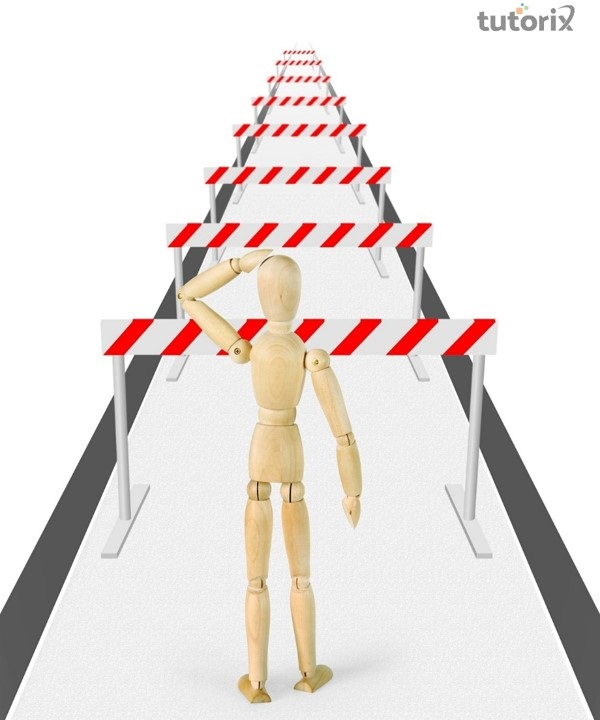

From solving a basic mathematical equation to deciding to buy a house, problem−solving is an integral part of our daily life. These problems can range from minor to major ones, like planning one's future career. The word "problem−solving" in cognitive psychology refers to the mental process that humans go through to identify, evaluate, and resolve difficulties. It is a complex process involving various steps like identifying and understanding the problem, researching appropriate strategies, and taking effective action to solve the problem and reach desired goals.

Understanding the precise nature of the problem is crucial before problem−solving can start. One's odds of successfully resolving an issue increase if their knowledge of the problem is inaccurate. People approach problems in various ways and may utilize various methods, like algorithms, heuristics, insight, etc., to identify and resolve problems. An algorithm is a systematic process that always yields the right outcome. An excellent example of a problem−solving algorithm is a mathematical formula. Although an algorithm ensures accuracy, it is not necessarily the most effective method for addressing problems. Due to how time−consuming this method may be, it is not useful in many circumstances. For instance, it would take a very long time to use an algorithm to discover all potential number combinations for a lock.
Heuristics are mental shortcuts that may or may not be effective in particular circumstances. Heuristics do not necessarily ensure a proper answer, in contrast to algorithms. However, by employing this approach to problem-solving, individuals are able to simplify difficult issues and narrow the field of potential answers to a more manageable group.
Another method of problem−solving is the trial−and−error approach which entails testing a variety of options and eliminating the ones that do not work. This strategy could be a decent choice if you have a small selection of possibilities. Before undertaking trial−and−error, it is preferable to reduce the available possibilities using another problem-solving strategy if there are several options.
Lastly, in some cases, the answer to an issue immediately comes to individuals. This might happen when they recognize that the issue at hand is just a rehash of earlier struggles. However, the fundamental mental processes that result in insight take place unnoticed.
It goes without saying that problem−solving is not a foolproof process. Our capacity to rapidly and effectively address a problem may be hampered by a variety of impediments. These mental barriers include functional fixedness, irrelevant information, assumptions, etc.

Assumptions − People frequently make assumptions about the limitations and barriers that impede specific solutions while addressing an issue or solving a problem.
Functional Fixedness − Functional fixedness is the propensity to perceive issues exclusively in their predetermined ways. Functional fixedness prohibits individuals from completely understanding all of the potential possibilities for a solution.
Unnecessary Constraints − A related barrier is unnecessary constraints that impose arbitrary limitations on an issue or problem. It relates to trying to use past experiences of what has worked in a circumstance to solve an issue and trying to force it to work in the present situation, rather than seeking a new solution. This limits inventiveness. With insight, the obstacle may be removed. The majority of problem−solving techniques center on gaining an understanding of a situation through data collection, analysis, and assessment. Unnecessary restrictions might result from an intellectual or emotional impediment that makes us rely too much on the familiar. An illustration would be trying to enhance a service utilizing the present procedures and processes as opposed to coming up with a solution and creating new procedures and processes.
Irrelevant or Misleading Information − It is critical to discriminate between knowledge that will help one solve the problem and information that won't, as the latter might result in poor solutions. Concentrating on false or unrelated information is simpler when a subject is extremely complicated.
Mental Set − When someone has a mental set, they are more likely to stick with past−effective solutions than consider new ones. An effective tool for problem-solving, a mental set frequently serves as a heuristic. Thought patterns can also be rigid, making it more difficult to develop workable answers.
Confirmation Bias −This is about establishing bias by not using the problem-solving approach. This may be caused by either skipping steps or failing to use them properly. Confirmation When a method is used to support a preconceived conclusion, bias results. In essence, one would have discovered the issue's solution prior to discovering the issue, and one would see the approach to problem-solving from this perspective.
Problem−solving is hindered by a variety of cognitive limitations as well as practical social and physical tasks. Perceptional, emotional, intellectual, expressive, environmental, and cultural factors might all be involved. Cognitive barriers are the patterns of thought and emotion we have. These influence how we approach and solve problems, creating hurdles. They typically provide biased, flawed, and incomplete answers. These obstacles may be overcome by becoming aware of the problems with issue solving and receiving instruction on how to use a solution strategy properly.